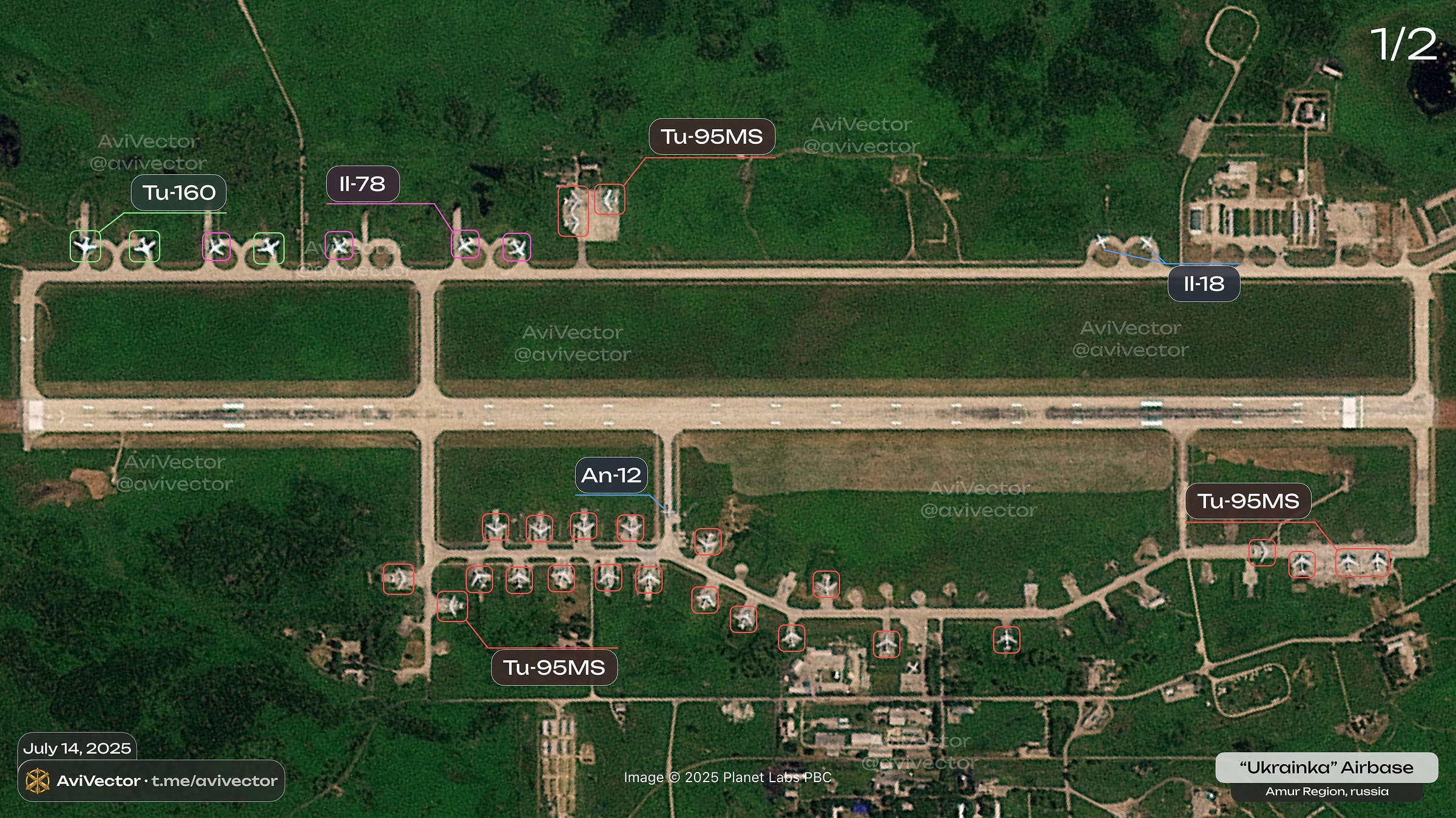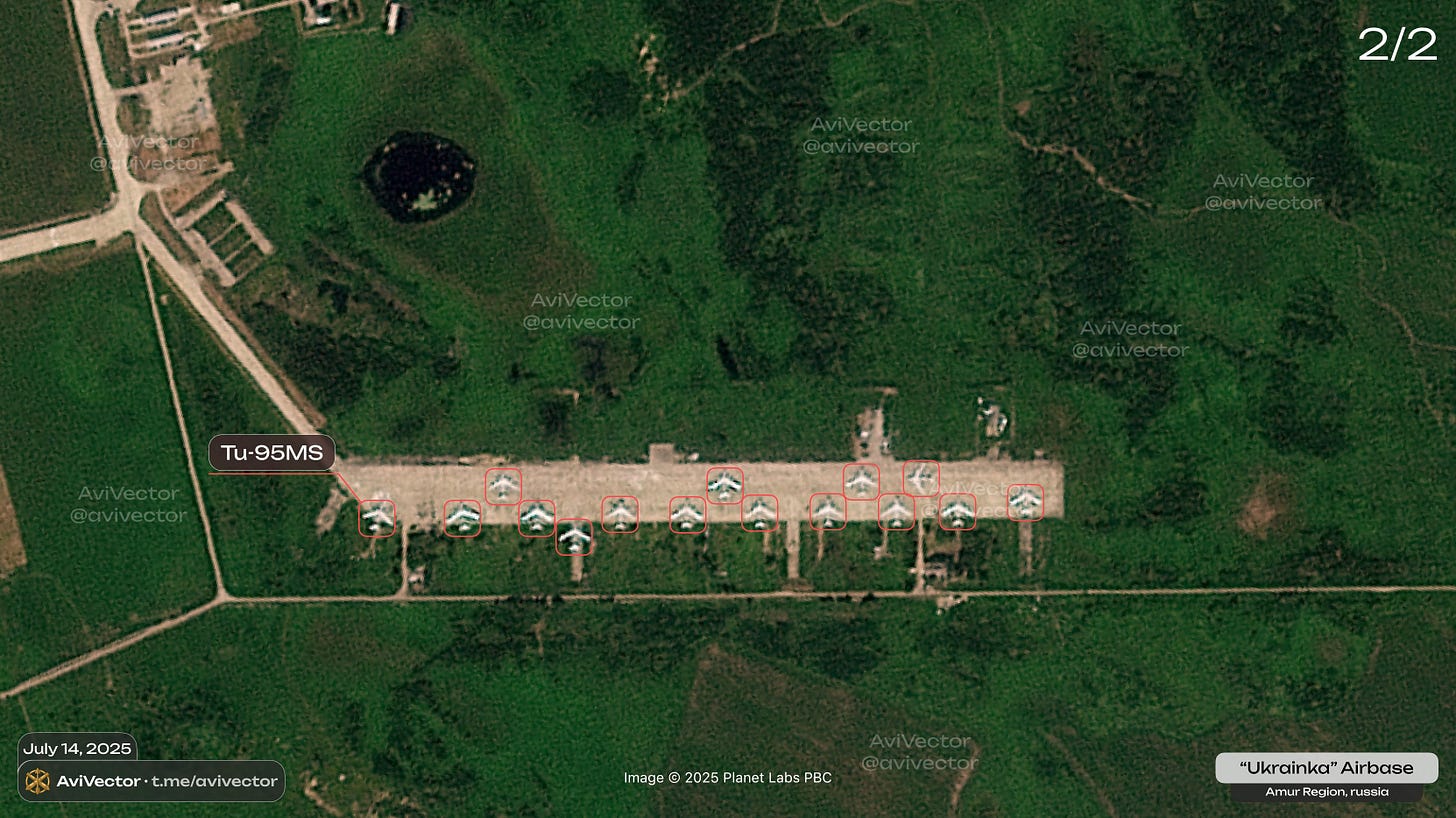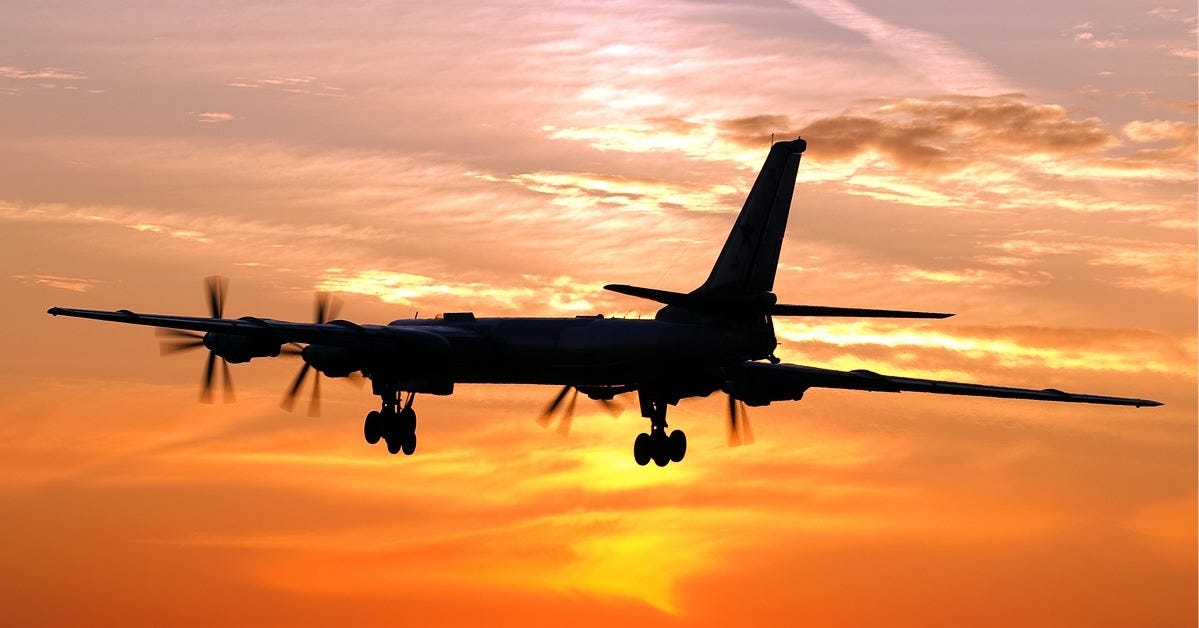91% of Russia's Bear Bombers Are Parked Wing-to-Wing at 1 Base
The 40 Tu-95s are big fat targets, but hard to hit
In the aftermath of the June 1 smuggled drone raid that destroyed 11 Russian air force Tupolev bombers—seven propeller-driven Tu-95s and four jet-propelled Tu-22Ms—the air force might have 44 flyable Tu-95MS Bears.
And now no fewer than 40 of them are sitting out in the open at one air base: Ukrainka, in Amur Oblast 3,700 miles from Ukraine. They’re not just juicy targets—they might be the juiciest targets at this moment in Russia’s 41-month wider war on Ukraine.
The Ukrainians would struggle to hit them, however.
The four-engine, subsonic Bears are the most active Russian bombers. Prior to June, the Kremlin managed to launch as many as a dozen Tu-95 sorties every month as part of its wider war on Ukraine. A Tu-95 carries up to eight Kh-101 cruise missiles, each ranging 2,200 miles with a 900-pound warhead.
It’s not for no reason the June 1 drone raid by the Ukrainian state security service, the SBU, singled out the Tu-95s. The SBU smuggled in more than 100 tiny first-person-view drones in trucks and swarmed five Russian air bases.
Olenya and Belaya air bases, respectively 1,200 and 2,700 miles from Ukraine, were hardest hit: four Tu-95s and a Tu-22M burned at Olenya; three Tu-95s and four Tu-22Ms burned at Belaya.
In the weeks following the attack, the Russians fortified some air bases. Saky air base in Crimea and Khalino air base in western Russia’s Kursk Oblast—respectively 140 and 70 miles from the front line—gained new protections for their aircraft, according to Ukrainian analysis group Frontelligence Insight.
“At Khalino air base, previously targeted by Ukrainian forces, Russian troops appear to have completed or nearly completed around 10 reinforced shelters with soil cover, 12 concrete shelters without it and eight hangar-style structures positioned on the aprons,” Frontelligence Insight explained.
“At Saky air base in Crimea, Russian forces appear to have completed at least 12 concrete bunker-style structures … now actively used by the Russian air force,” the group added. “Inside these reinforced shelters, we’ve identified both jets and larger drones.”
Soft targets
But the Russians aren’t fortifying their bases farther from the front line—including Ukrainka, the new home of virtually all operational Tu-95s. Satellite imagery circulated by analysis group AviVector shows many of the irreplaceable bombers, which are no longer in production, parked nearly wingtip-to-wingtip on the base’s aprons.
Russian officials are clearly expecting that the sheer distance from Ukraine to Ukrainka—3,700 miles—will protect the Bears from further attack. But recall that the SBU’s raid on June 1 did manage to sneak a truck full of drones to the outskirts of Ukrainka.
It was random chance that the base escaped damage. The truck carrying the drones “caught fire near the village of Seryshevo in the Amur region close to the Ukrainka airfield,” Kyiv Post reported. The Russian driver, who was apparently unaware that his trailer was secreting Ukrainian drones “was apparently killed after entering the trailer that then exploded.”
A follow-on raid targeting Ukrainka could finish the job that the June 1 raid started—and knock out many or most of the remaining Tu-95s.
It’s easier said than done. Yes, Ukrainka is a soft target. “Russian force protection at their bases was atrocious” on June 1, commented Ben Hodges, a retired U.S. Army general. It’s still atrocious at Ukrainka.
But the Russians aren’t wrong that the distance helps protect the base. Ukraine’s longest-range deep-strike munitions—its fixed-wing attack drones—can travel as far as 1,200 miles. Some of them have even struck in the vicinity of Olenya. None can reach Ukrainka, however.
It would probably take another special operation similar to the June 1 raid to target Ukrainka a second time. But the June attack required more than a year of planning. And an identical raid might not work, given the post-attack spike in truck inspections.
So unless the Ukrainians are already working up a plan—and a radically different one—all those priceless bombers lined up at the base are probably safe for the time being.
Read more:
Russia's Bear Bombers Are Quitting the War
The Russian Bear bombers that survived the Ukrainian drone raid last month have fled east, away from Ukraine—and now appear to be flying less often and firing fewer missiles at Ukrainian cities.







